Networking
LEAPSWebsite: https://leaps-initiative.eu/ |
 |
LEAPS - the League of European Accelerator-based Photon Sources - is a strategic consortium initiated by the Directors of the Synchrotron Radiation and Free Electron Laser user facilities in Europe. Its primary goal is to actively and constructively ensure and promote the quality and impact of the fundamental, applied and industrial research carried out at their respective facility to the greater benefit of European science and society.
Mobilising LEAPS substantial collective knowledge, experience and expertise in synchrotron and FEL science and technology, and Research Infrastructure management will benefit European science and society.
MOSBRIWebsite: https://www.mosbri.eu/ |
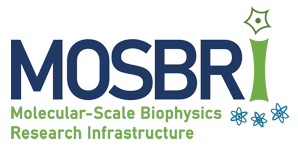 |
The European Union’s Horizon 2020 INFRAIA programme has awarded a 5 M€ infrastructure grant to MOSBRI (Molecular-Scale Biophysics Research Infrastructure https://www.mosbri.eu), a consortium of 13 academic centres of excellence and 2 industrial partners from 11 different European countries, coordinated by Institut Pasteur (Paris, France). In practice, this means that we are opening our laboratories to European researchers, so that they can travel to where the best equipment and the best expertise is. Transnational access (TNA) under MOSBRI will provide free access (paid by the project) to the consortium's laboratories and is especially aimed at young researchers.
The AU-CD beamline on ASTRID2 is one of the laboratories open for access, with the coordination and management of all TNA for the network carried out by the AU-CD team. Read more about the opportunities for TNA to the AU-SRCD facilities under this programme here.
The MOSBRI project started in July 2021 and ends in June 2025.
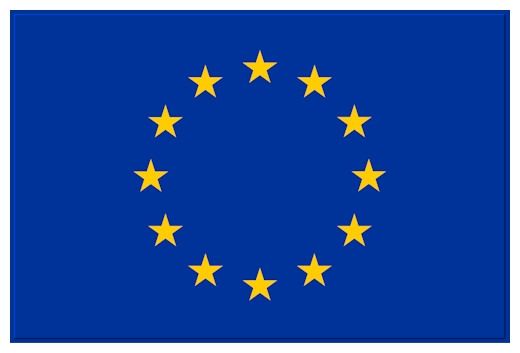 MOSBRI has received funding from the European Union’s Horizon 2020
MOSBRI has received funding from the European Union’s Horizon 2020
research and innovation programme under grant agreement No 101004806
NEPHEWSWebsite: https://beamtime.eu/ |
 |
The NEutrons and PHotons Elevating Worldwide Science (NEPHEWS) project delivers access to the world-class collective of Europe’s premiere open advanced neutron (N), synchrotron (SR) and free-electron laser (FEL) complementary research infrastructures (RI), to promote curiosity driven excellence in research.
Under NEPHEWS, in a novel approach the RIs, jointly with their 40k+ user base of scientists through User Organisations, provide a user-driven access program targeting new and non-expert communities, with a focus on Widening countries, Ukraine and Africa a priority. The bottom-up User-to-User-oriented approach aims to build an integrated European RI landscape involving LEAPS and LENS consortia and their European scientific user communities.
Together with 22 other synchrotron radiation, FEL and neutron facilities, ISA is participating in the EU co-funded NEPHEWS project. Under NEPHEWS we offer free-of-charge transnational access (TNA) to the ASTRID2 beam lines, covering travel and accommodation for eligible users.
NEPHEWS has a special focus on offering support to people from EU Widening countries, Ukraine and countries without direct access to large scale research infrastructures in their country.
The NEPHEWS project started in January 2024 and ends in December 2026.
 This project is co-funded through the European Union’s Horizon Europe programme under grant agreement No. 101131414
This project is co-funded through the European Union’s Horizon Europe programme under grant agreement No. 101131414
NFFA EuropeWebsite: https://nffa.eu/ |
 |
The EU funded project NFFA-Europe PILOT (NEP) aims at increasing European competitiveness in nanosciences and nanotechnologies and includes an open access platform for carrying out comprehensive projects for multidisciplinary research at the nanoscale. The projects qualified for access range includes the use of synchrotron radiation sources.
Special to the NEP project is that it is not an alternative vehicle to only access large scale facilities, like ASTRID2, and access is not granted to a beam line alone. The proposal has to include access to more than one type of installation offered under the NEP programme.
From early 2024 NEP also includes ISA, therefore it is possible to apply for free-of-charge transnational (TNA) access to the ASTRID2 Matline and AU-UV beam lines.
The NFFA-Europe pilot project started in March 2021 and ends in February 2026.
 This research project has received funding from the EU's H2020 framework programme for
research and innovation
This research project has received funding from the EU's H2020 framework programme for
research and innovation
under grant agreement No. 101007417
ISA delivers accelerator system to European Spallation Source (ESS) in Lund, SwedenWebsite: https://europeanspallationsource.se/ |
 |
ISA has, since 2011, taken part in the design and construction of the ESS in Sweden. Within a few years the ESS will be the world's most intense neutron source for multi-disciplinary research, especially within materials science. The ESS is a pan-European project with Sweden and Denmark as host countries. ISA has responsibility for the design, prototyping, long-term testing, production and delivery of a raster-scanning magnet system for the ESS. The magnets can quickly scan the energy-rich, 5 MW, proton beam across the "target", where the neutrons are produced. The required frequency of the movement of the beam is up to 50 kHz, and therefore the power supplies and associated ferrite magnets have to be able operate up to this frequency. The vacuum system has to be built from ceramic materials. The system has already been delivered to Lund in Sweden; it is expected that it will be installed in 2021 and in full operation in 2022-23.
- The Beam Delivery System of the European Spallation Source (cern.ch)
- AN1-2019.indd (aktuelnaturvidenskab.dk)
Wayforlight: The Catalogue of European Light SourcesWebsite: https://www.wayforlight.eu/en/ |
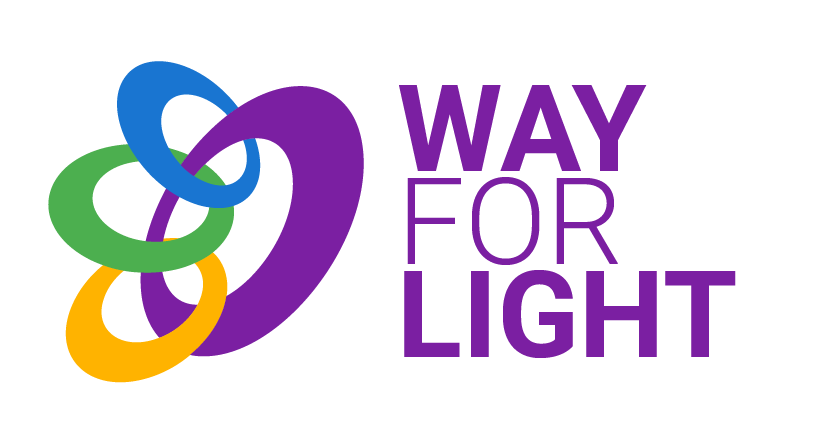 |
Wayforlight.eu is a user-oriented web-portal integrating all European light sources and was created during the FP7 funded project CALIPSO, to offer a single entry point for information about the European synchrotrons and free electron lasers. It offers a database to retrieve up-to-date information on the facilities, beamlines and their instrumentation. A set of advanced search tools allow filtering by scientific discipline, technique and the most relevant parameters used in experiments.
Thanks to the Horizon 2020 EUCALL project, the database now has a broader scope and includes optical laser sources, benefiting varied and growing research communities. Users can browse more than 300 beamlines at 38 facilities, fine-tuning their search for the most suitable and complementary instruments for their experiments. Within the Horizon2020 CALIPSOplus project, Wayforlight has been enriched with sections dedicated to academic and industrial users.
New users can profit from the network of the European Synchrotron User Organisation (ESUO), funded in 2010 and bringing together delegates from 30 European countries. https://www.wayforlight.eu/en/users/esuo/
Industry can find useful information from a multi-language section presenting the resources available at the various light sources as well as their industrial liaison office contacts. https://www.wayforlight.eu/en/industries/
The portal is constantly being developed and discussed with the facility stakeholders and potential new partners. In this respect, a pilot project is also planned within the League of European Accelerator Based Photon Sources (LEAPS) initiative, grouping all accelerator-based European light sources towards a European Technology Roadmap.
Videos
| The European Synchrotron and FEL user organisation (ESUO) | Supporting Industry |
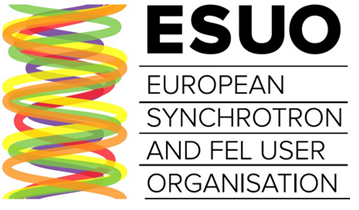  |
 |
Villum CentreWebsite: http://villumcdm.org/ |
The VILLUM Centre of Excellence for Dirac Materials was founded in 2016 in order to study the properties of the so-called Dirac materials, a group of solids characterised by an electronic, vibrational or magnetic structure in the form of a Dirac cone. The centre’s main experimental activity is placed at Aarhus University while its main theoretical node is located at Nordita in Stockholm.
Previous networks
CALIPSOplusWebsite: http://www.calipsoplus.eu/ |
 |
The aim of the CALIPSOplus project is to remove barriers for access to world-class accelerator-based light sources in Europe and in the Middle East. To this end more than 82,500 hours of trans-national access are provided to these research infrastructures and specific programmes are in place to teach new users how to successfully use synchrotrons and FELs. Dissemination activities targeting industry are complemented by tailor-made support and access programmes for this user group. In parallel the consortium is collaborating on constantly developing technology to keep the facilities at the cutting-edge.
The CALIPSOplus project started in June 2017 and ended in October 2021. Read more about the opportunities for TNA to ASTRID2 under this programme here.
CALIPSOplus was funded under the Grant Agreement 730872 from the EU Framework Programme for Research and Innovation HORIZON 2020
Green Magnets for acceleratorsWebsite: None available |
 |
ISA has, along with DANFYSIK A/S, Sintex A/S, the Department for Energy Technology, Aalborg University, and the Engineer High School in Aarhus, developed green magnets for use in particle accelerators. A green magnet uses permanent magnetic material to produce strong magnetic fields, different to conventional magnets where magnetic fields are produced by large electric currents in a copper coil. The energy use for electromagnets can easily be 10 kW or more, but is reduced to nothing using a permanent magnet. The energy savings mean that the cost of producing a green magnet is typically covered within a few years. Such a magnet has been in use for many years at the ASTRID2 facility (Image). Many facilities worldwide are now also using these "green magnets", which are produced by (amongst others) DANFYSIK A/S.
- IFA news article: Grant to "Green accelerator technology for Magnet Systems"
- Experience with a NdFeB based 1 Tm Dipole
CALIPSOWebsite: http://calipso.wayforlight.eu/ |
 |
CALIPSO coordinated the European synchrotrons and FELs, including the three ESFRI roadmap projects European XFEL, EuroFEL and the ESRF Upgrade Programme, towards a fully integrated network. The consortium was characterised by common objectives, harmonised decisions, transnational open access based on excellence and joint development of new instruments. Innovative networking initiatives address user friendliness and a strengthened industrial interaction.
CALIPSO proposed a single entry point (www.wayforlight.eu) to simplify access modalities, to help potential users to find the best beamline for their experiment and to favour interactivity; in addition, targeted education actions aimed to widen and strengthen the community. Transnational Access potentially benefited a community of 30,000 European users represented by European Synchrotron User Organisation (www.ESUO.org). The pivotal EC funding in CALIPSO supports scientists to perform their research at the best facilities, thus promoting equal opportunities for all European researchers. This is particularly important for colleagues from less-favoured countries, early stage and female researchers.
The European light sources represent a largely underexploited pool for European industry. To enhance light source-industry interactions, CALIPSO proposed a networking activity including specific events to involve industries both as users and instrumentation suppliers, a pan-European Industrial Advisory Board to orient these actions, in preparation for Horizon 2020, and a dedicated task to exploit the innovation potential of the Joint Research Activity. The CALIPSO joint research activity focused on detectors development, one of the most significant joint challenges for present and future light sources.
CALIPSO started in June 2012 and ended in May 2015 and was selected by the European Commission as one of the FP7 "Success Stories".
CALIPSO was funded from the European Community's Seventh Framework Programme (FP7/2007-2013) under grant agreement number 312284.
OPACWebsite: https://www.liverpool.ac.uk/opac/ |
 |
The goal of this network was the optimization of the performance of any Particle ACcelerator (oPAC).
OPAC received funding from the European Union's Seventh Framework Programme for research, technological development and demonstration under grant agreement no 289485.
ELISAWebsite: No longer available |
 |
The ELISA project had two strategic objectives:
- to support transnational users of national facilities in the domain of synchrotron and FEL science;
- to support joint research activities (JRAs) with the purpose of
- a) enhancing the effectiveness of the facilities in serving users and in particular transnational users, and
- b) contributing to the development of novel sources in this domain.
ELISA ran from March 2009 - August 2011.
ELISA was funded under the EC-FP7 Integrated Infrastructure Initiative (I3), grant agreement nr. 226716.
i3 IA-SFSWebsite: No longer available |
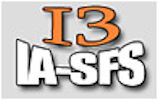 |
The i3 IA-SFS project had two strategic objectives:
- to support transnational users of national facilities in the domain of synchrotron and FEL science;
- to support joint research activities (JRAs) with the purpose of
- a) enhancing the effectiveness of the facilities in serving users and in particular transnational users, and
- b) contributing to the development of novel sources in this domain.
i3 IA-SFS ran from March 2004 - Februaray 2009.
I3 IA-SFS was funded under the EC-FP6 Integrated Infrastructure Initiative (I3), grant agreement nr. RII3-CT-2004-506008.
Last Modified 02 September 2024